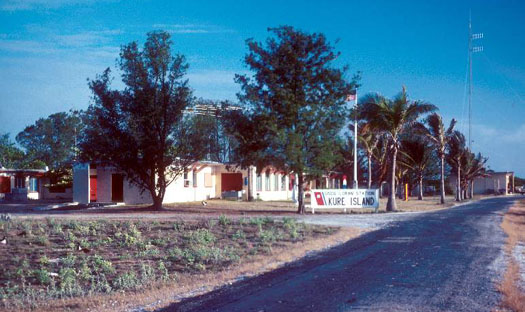
During the summers of 1979 and 1980, I spent a total of six weeks diving the lagoon of Kure Atoll at the far northwestern tip of the Hawaiian chain as part of a research team studying spiny lobsters, Panulirus spp. At the time, Kure was the site of a small Coast Guard Loran Station.

The northernmost coral atoll in the world, Kure is a small circular atoll only a few kilometers in diameter with a mostly shallow lagoon. In the chart scan below, the green zone is all less than 5m depth. Only in the southwestern portion of the lagoon, the white patches show depths down to about 17m.
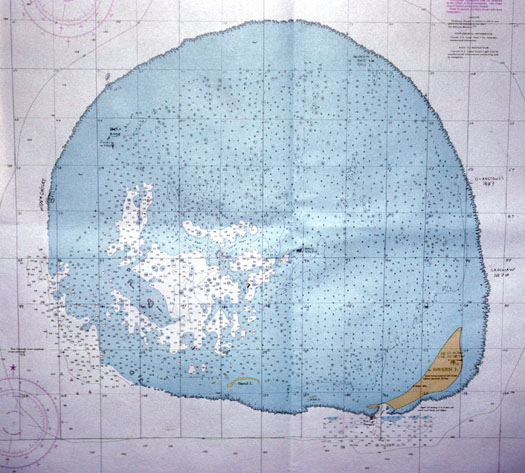
Most of our time was spent snaring, measuring, and tagging lobsters, mapping their dens, and trying to avoid the large tiger sharks feeding on the fledgling albatross that would often crash in the lagoon while practicing take-offs. The only real island at Kure besides a couple of sand bars is Green Island, shown below. It is covered mostly with low vegetation, primarily Scaevola, along with a few Casuarina and a couple of other trees. In the open areas were lots of nesting birds.
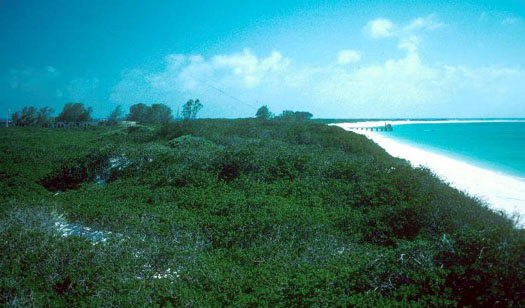
Kure was right in the path of north Pacific currents and tradewinds, so wayward glass fishing floats would commonly wash ashore on the windward beaches.
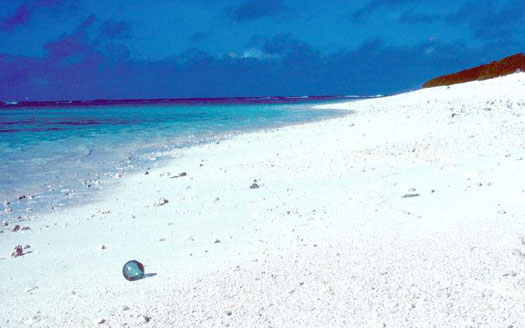
Below, the crew prepares to head out to the deep portion of the lagoon to set some lobster traps. On many of our 4 to 6 km trips across the shallow lagoon to the lobster site, we were accompanied by a pod of porpoise.
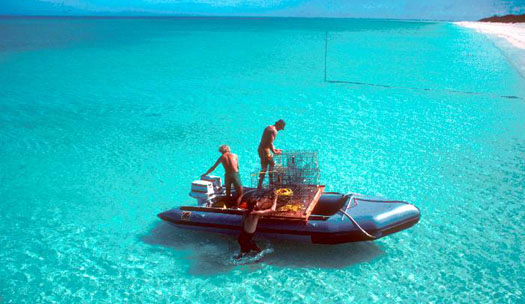
We did mostly work diving, and it was hard to avoid spending much of our limited free time watching the incredible seabirds all over the island and the Hawaiian Monk Seals that would haul out on all the beaches. But I did manage to break off work on a couple of days when it was still light enough to swim through the outer fringing reef to the seaward slope. Below, a couple of monk seals swim past on the reef we crossed to dive the seaward slope.
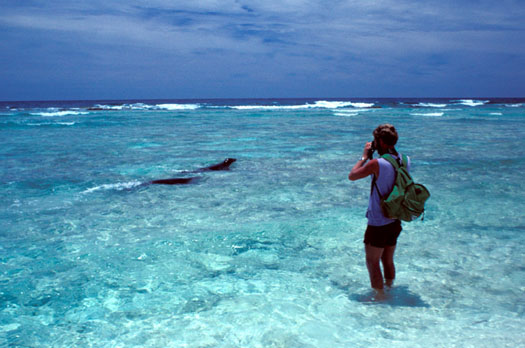
Another seaward reef dive I made was at this spot on the north reef where the fishing boat Hoei Maru had appeared a few years before a day or two after departing Midway. No trace was ever found of the crew. For our dive, we anchored here and swam across the reef and through the breakers.
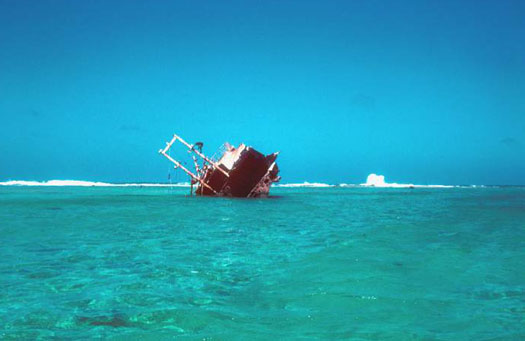
Despite the limited time for looking, I saw quite a few interesting opisthobranch species at Kure. The four most common were Goniobranchus sp. h205, Platydoris inornata (all larger than the specimens I saw around Oahu), Phyllidia scottjohnsoni (all on the seaward reef dives), and Thorunna kahuna. I also saw a number of Siphopteron flavum, several Hypselodoris alboterminata, and the only specimens of Hypselodoris insulana and Thordisa sp. h213 I ever found. I'm sure there would have been a lot more if I'd had time to look under rocks.
Close tab when finished.